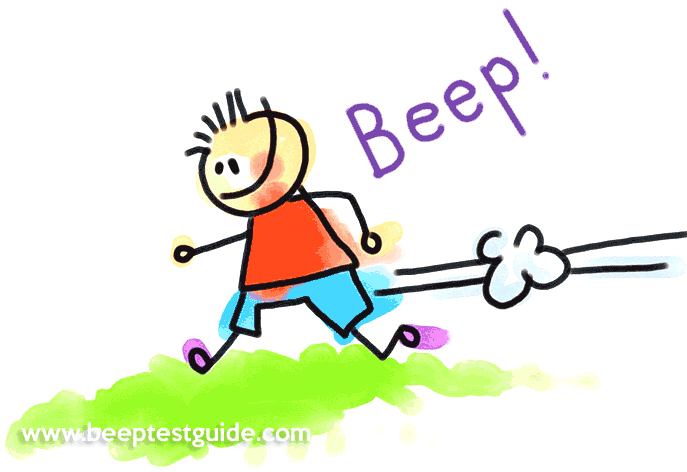Training for the Beep Test
This page is about training to improve your beep test score. As the beep test is a measure of your aerobic fitness, the best way to improve your score is to focus on improving that aspect of your fitness.
There are no shortcuts, to make significant changes to your fitness requires a commitment, and some unavoidable hard work. That doesn't mean you cannot enjoy it. Nothing beats the satisfaction of improving your body, achieving goals and performing better in your sport.
Training is just one of many things you can do to improve your beep test score, also check out our ten tips to give your beep test score a boost. As well as training to improve you test score, you should make sure you are well-prepared to perform maximally. See our guide to Preparing for the Beep Test.
Which Fitness Components Are Being Tested?
The fitness components and physical abilities involved in performing the beep test is complex. It is a test that gradually builds up from a slow jog to fast sprints. The exercise relies on both the aerobic and anaerobic systems (lactate tolerance), as well the factors of running speed, acceleration and agility playing a part in the final test result.
Training Guidelines
Below are some suggestions for different training sessions you can include. The specific session you do will depend on your current fitness level and ability, and other factors such as time constraints and availability of equipment.
As a general guideline, you should have 4-6 training sessions per week directed toward increasing fitness. Make sure you have a least 1-2 days of full rest each week to avoid burn out and aid recovery.
Aerobic Fitness
The beep test is partly dependent on your aerobic fitness. To significantly improve your beep test score you need to do specific and general aerobic-type training. The key is to do a variety of distances and intensities to best stimulate the aerobic system, making sure that you are working at a high enough intensity so that adaptation takes place.
Example training session ideas:
- long slow running - between 3-10 km or 2-6 miles.
- 3-5 x 1 mile or km runs at 75%
- circuit training - incorporating whole body activities (running, cycle, stepper), body weight exercises and lifting weights.
Running speed is particularly important when nearing the end of the beep test. At high levels of the beep test, participants are required to run not particularly fast for a sprinter, but if it is close to your maximum running pace then you can benefit from training to increase your sprinting speed and to sprint more efficiently.
Improving running speed starts by improving flexibility, and following a range of sprint drills (high knees, leg flicks etc.) and focusing on technique. Plyometric training (bounding) and other strength and power training can improve your acceleration. For improving maximum speed, nothing beats running at maximum speed, such as a series of maximum effort sprints over distances such as 20, 40 and 60 meters, with a good rest/recovery period between sprints. It is also a time to work on accelerating quickly using good sprint technique.
Turning ability and acceleration are important in the beep test, as you need to quickly pick up the pace at the start of the sprint, turn efficiently, and accelerate out of the turn. It is important to include short acceleration runs in your training, and incorporate change of direction drills too.
Test Specific Training
Although it is best to use the guidelines described above to train the fitness components that make up the beep test, it would be wise to replicate the actual elements of the actual beep test in training so the body adapts to those specific demands of the test, and you are able to practice running at the required pace and to work on your running and turning techniques under test conditions.
You should do a practice beep test about a week before the assessment, particularly if you are doing the test for the first time or if there has been a long break since the last time the test was performed.
More Resources
- Read our Top-10 Tips to Maximize Your Score
- A guide to Preparing for the Beep Test
- List of Beep Test Resources
Reference this Page

